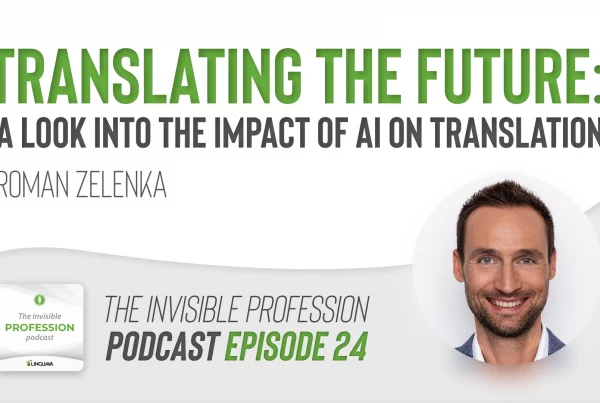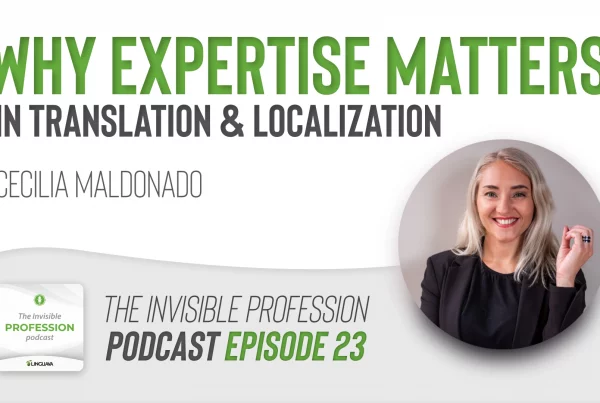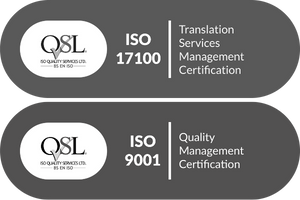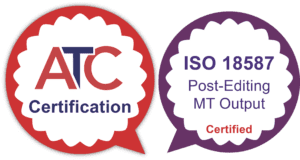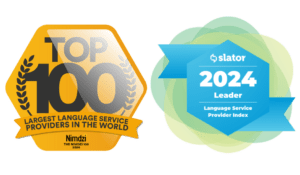Did you know that in Mexico alone, there are 11 language families? Within those language families there are 68 indigenous languages and within those languages 364 different language variants. The difference between variants can be so great, that people speaking a different variant cannot understand each other even though they are speaking the same language!
In this podcast episode, we sit down with Victor Sosa, the Interpreter Services Manager at Natividad Hospital in Salinas, CA, to discuss the challenges around interpreting indigenous languages, and how providers can best work with indigenous-speaking patients in healthcare settings.
“The providers and the organizations really need to do some research as to who is in their community and what specific languages they speak. So once you identify who is in your community, those are the languages generally that you’ll get and be seen at your organization.
In other words, it has to do with education, knowing who the immigrant communities are, and what languages they speak. And then speaking to people in their primary language. Yes, some of them may speak another language like Spanish, but it’s really an injustice to require somebody to speak about their healthcare, something so delicate as their health in a language that it’s not their primary language, and then have to struggle with communication.
” – Victor Sosa
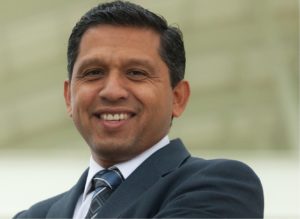
Victor is a career Interpreter, Trainer, and Author, his Interpreter career spans more than three decades, having worked as a Certified Court Interpreter and a Certified Health Care Interpreter. He has spoken Nationally and Internationally as a subject matter expert for interpreting, in particular around the Indigenous interpreter experience. He is the Co-Author of The Indigenous Interpreter Textbook, a 60-hour Community Interpreter curriculum targeted to Indigenous and LLD speakers, and has trained over 200 Indigenous speakers. He is presently the interpreter services manager at Natividad Hospital, a public safety net hospital located in California’s central coast, and has had the distinct privilege of working with the Indigenous immigrant population for the past 12 years.
Listen to Linguava’s podcast on all your favorite platforms here.
Connect with us on your favorite social site:
LinkedIn | Facebook | Instagram
At Linguava, we are dedicated to reducing communication barriers and providing equity to all members of our community through language access services.
If you are interested in learning more about incorporating language access into your business or would like to book a training session, contact us today.
Transcript – The Invisible Profession Podcast Ep. 021
David: Welcome everyone. Thank you so much for joining us today. Super excited to be here with the individual we get to speak with today.
And I don’t want to miss out on anything. It’s a real treat to have Victor Sosa with us this morning. He is not only an interpreter. He is also an interpreter trainer. He’s an author. He is the interpreter services manager at the Natividad Hospital in Salinas, California. And his interpreter career spans over three decades.
He’s worked as a certified court interpreter, a certified healthcare interpreter has spoken nationally and internationally as a subject matter expert for interpreting and in particular around indigenous interpreting and the experience there. He’s also the co-author of the indigenous interpreter handbook, which is a phenomenal guide and handbook for working with the indigenous communities as well as if you are an indigenous interpreter representing the indigenous language, it’s a great way to get started and to expand your skills as an interpreter. And we’ll talk more about the book in a moment. He has trained over 200 indigenous speakers as interpreters. He is presently, doing trainings as well. And it is so great to have you here with us on the podcast Victor. People like you are just true rock stars in our community, and we’re so grateful to have this conversation.
Victor, I know that you are a certified healthcare interpreter in the Spanish language, and you also know ASL, is that correct?
Victor: Thanks. Thanks David. For the introduction.
Yes, that’s correct. My wife is an ASL interpreter I’ve been able to learn ASL with her.
David: That’s wonderful. That’s one of the languages I’m trying to learn as well with our ASL team at Linguava. My favorite sign is this one which is jumping for joy.
So I’m learning little signs that I’ve got a six-month-old son. So trying to teach him all the simple signs as well.
Victor: Awesome, that’s good. To me, it’s a privilege to be here. Anytime I can talk about the indigenous interpreting experience. I think it raises their profile and I just like talking about the subject. I feel like a dinosaur when you say three decades, but it’s been fun I really enjoy what I do.
David: You have a wealth of knowledge, and I’ve gotten to know Victor briefly over the past few months. And it’s been really great getting to know you, Victor, and also for those of you who don’t know as well, Victor has also collaborated heavily with the NCIHC.
And it was in 2013, if I’m getting that date right, was also the language access champion of the year. It’s a real honor and a privilege to get to speak with you, Victor. So the first question I have for you is in regards to indigenous languages, and one of the questions that comes up in our industry, Is in regards to working with indigenous speaking patients.
And so what are some of the main challenges that you hear about from providers that, that they encounter when working with indigenous-speaking patients and what are some tips that you could be able to give them as a guide?.
Victor: That’s an excellent question because I think it all starts when the provider wants to do their due diligence and really communicate with the patient. And some of the challenges they face is really, there’s just a scarcity. Professional interpreters in indigenous languages and languages of limited diffusion. That’s just the reality. And for many of them, it’s very difficult to access an interpreter, a trained interpreter because of that.
Another reason is many of the indigenous languages and languages of limited diffusion come from very isolated places in the world. Our providers really are not familiarized with the language. And a lot of times what happens is they have trouble identifying even the language that the patient speaks.
And so those are two really big challenges for providers. Third one, is also the cultural misunderstandings sometimes that happened because many of the indigenous are immigrants that come from very isolated places that are not familiarized with our healthcare system.
Yeah. For medical providers that are trying to best identify the patient’s target language and to not make the big mistake of just assuming that well, they speak a little bit of Spanish, so let’s just get a Spanish interpreter. What steps could they take to best identify the exact language?
An advantage that everybody has is generally the migration patterns are the same. In other words, even though there are many different indigenous languages, generally communities start to emerge in some areas.
Maybe the same variant or the same language. So the providers and the organizations really need to do some research as to who is in their community and what specific languages they speak. So once you identify who is in your community, those are the languages generally that you’ll get and be seen at your organization.
In other words, it has to do with education, knowing who the immigrant communities are, and what languages they speak. And then speaking to people in their primary language. Yes, some of them may speak another language like Spanish, but it’s really an injustice to require somebody to speak about their healthcare, something so delicate as their health in a language that it’s not their primary language, and then have to struggle with communication.
David: Yeah. So it sounds like really what you’re saying is on the front end, trying to be proactive and making sure that you really know what the community is looking ahead of time to be prepared for who you’re servicing as best as you can.
Victor: Yes, correct. And the second thing is that even inside the organization when you encounter an individual that does speak English or Spanish and you suspect they might speak an indigenous language. It’s very important to try and get correct information instead of just relying on the Spanish interpreter. And as far as identification of languages, I could speak to some of the indigenous languages from Mexico, which is something that I’ve worked around for the past 12 years. And maybe give some clarity.
So in Mexico, there’s 11 language families and from those language families, indigenous languages, there are 68 major languages in Mexico, but from those 68 languages, there’s 364 variants.
David: Pause over here, I want to make sure that everyone just captured that. Cause I just learned that the other day, I didn’t realize how many variants there were. So you said within Mexico, for example, there’s 11 languages, 68 different…
Victor: So it’s actually 11 language families, right? And from those 11 language families emerged 68 major indigenous languages of the populations of the indigenous and Mexico.
But from those 68, have emerged, develop in isolation many times from one another. Individuals or communities may speak the same language, but the variant becomes so different that they can’t understand each other. So for example the language of Mixteco, or if you have a Mixteco patient, you might call the language vendor and ask for an interpreter.
There’s over 80 different variants of Mixteco. And most likely, if you don’t get the exact same variant, then they will not be able to communicate. And that’s very frustrating for providers, right? Because they make an effort to try and get help with communication. Only to find out that the interpreter that was connected doesn’t speak the same variant. That is one of the challenges with language identification. Another challenge has been that historically individuals have categorized these languages into three major categories, high, medium, or low (alto, medio, and bajo). And obviously, that is not a good system to categorize such a large variety of languages. What is a better way or a more efficient way is to identify the language and then the region or Municipio as they use it in Mexico or even the town or township that the person is from or pueblo. So if they’re able to identify that the person speaks Mixteco from San Martin Peras, then that’s really valuable information to be able to get the interpreter that can speak that variant of San Martin Perez. And then you have a good likelihood that they’ll be able to communicate.
David: And how close would you say that the variants are for a language, let’s say Mixteco, how close are the variants from one to the other?
Victor: So it, it varies a lot, but our experience has been that even regions that are geographically close to each other the difference of variant is so marked or so prevalent that they can’t understand each other.
So do we want the patient to try and speak a language that they partially understand because they’re the same language family? Or do we really want to get the language that the patient speaks? So we’re back again to forcing the patient to speak in a language that is not truly their own.
David: It’s more of a bandaid, trying to check a box approach. And I think you hit the nail on the head. There is what’s going to be the best thing for the patient. If we were all to put ourselves in that situation, where we’re not speaking our main target language, or talking about something complicated, like our health or our children, or family members’ health, what would you want?
And what’s the best thing to create that health equity and improved health outcomes. And it’s going to be in their main target language. How many providers do you think really understand that and understand the importance of getting it right and not just a good enough approach?
Victor: Yes, I think the providers do want to give the best care and have good health outcomes. I think they do value effective communication. I think one of the tricky parts is many times the providers don’t think about the language needs of the patient until the patient is there right there in front of them. And by that time it’s almost, it’s a huge challenge. So really the needs of the patient in particular, the indigenous interpreter, the indigenous patients has to be thought before the need arises, right?
You have to have a strategy to be able to meet the needs of those patients before hand and not when the patient is there in front of the provider. Once they’re there, you can’t. Anything else, but just to do whatever is possible. And that’s where you providers usually say we’ll use the Spanish interpreter or we use the variant that wasn’t their variant because we had no other option.
Yes, of course. Once they’re in front of you, you have no other option. But if the work can be done ahead of time or strategically You can locate and identify resources ahead of time. Then the provider does not have to depend on the last minute options or whatever’s available.
David: And that’s the real value in being able to have that partnership with your language service company.
To be able to work together understand the communities that you’re serving at your clinic or your hospital. And ultimately, what can your language service company be able to support what languages what’s going to be the best modalities, the best verticals of service to be able to provide. So that, like you said, when that patient is there, you’re already prepared and you’re not scrambling, not even sure where to start.
Talk to us a little bit about the interpreter trainings that you provide and why is it so valuable to be able to provide these trainings specifically for the indigenous speakers? And what does the pool look like today of indigenous language interpreters?
Victor: So the good news is that the pool of indigenous interpreters is growing. And one of the reasons we thought about developing a training for indigenous interpreters specifically for that language group is because many of the indigenous speakers who want to get into the profession really didn’t have a pathway to do this.
Many of them struggle with finding appropriate education and often they have to work during their school years rather than when they graduate. And so many times those struggles that they’ve had to be able to break into the industry have been difficult. So we’ve tried to create a training program so that many of them break into the profession in a safe way where they acquire the skills, the skill set for interpreting. They learn the context of the profession and are able to interpret safely right into their languages.
They have other challenges. For example, one of the the major challenges that indigenous interpreters have is that a lot of the westernized terms or concepts don’t exist in their language, there’s no direct interpretation or communication for something like a primary care physician, for example.
So then they have to come up with equivalencies and that requires a special skill learn how to create an equivalency that the patient will understand in their context. Those are some of the challenges that other interpreters, for example, Spanish and English interpreters don’t face and are not trained to do because that’s not an experience in their interpretation.
We created a 60 hour interpreter training. And it’s mainly for community and healthcare, but it also has some legal components because oftentimes indigenous interpreters don’t have a choice. If you have a Mixteco defendant and the interpreter is available, they’re almost forced to have to interpret in court because nobody else is available.
The other thing, our training is separated in 21 different modules, which means that we can teach a specific skillset to the interpreters without overwhelming them with all of the interpreting skillset. And I think that’s very efficient because oftentimes indigenous interpreters, even though they may speak the language for example English, oftentimes have gap in understanding because they have not been part of a professional environment, maybe they grew up here, but their English skills are very limited. So oftentimes we try to provide the specific skillset one at a time so that it helps us to plug in a lot of the gaps and lack of context sometimes that they experience.
David: I appreciate what you’re doing in that space and being a true leader there is it’s such a huge need being able to provide those kinds of opportunities. One more question, before we do that Victor, what’s the best way for people to connect with you?
If they have questions about your interpreter trainings or wanting to ask you further questions?
Victor: That’s a good question. I think you have my email David, they can always contact you. They can contact me. And I often do an interpreter training once a year. Oftentimes if a specific language group, when an advocacy group wants to train their people I make arrangements to be able to do that.
It could be virtual. It could be in person. I think the 21 modules that we have are very versatile. We’ve done both in-person and virtual and they both are very effective to be able to teach the skill set. But I can provide my email.
David: We can put that we can put that up on the video as well for everyone, if that’s the best way to contact you.
And Victor, one of the things that to quote you, one of the things that you say is that the patients are the best source of their own culture. And sometimes providers want to rely too heavily on the interpreter to be not only the interpreter, but the cultural broker, which is a role of the interpreter, can play.
However to quote you again, patients are the best source of their own culture. Can you give us an example where you’ve seen with a provider misinterpreting the culture or making an assumption about someone’s culture and not including the patient and what’s the best way for the provider to really understand the unique patient culture that they’re serving.
Victor: Yeah, David that’s an excellent question, because that is one of the recurring issues that come up with indigenous communities the cultural misunderstandings, many times the providers, again they want to be empathetic, they want to understand the patient, but oftentimes they look at the interpreter as a cultural expert. And it’s true interpreters, we have insight in culture and it allows us to help broker or mediate, maybe a cultural misunderstanding. But for indigenous interpreters, that gap is astronomic was huge because many of the cultural misunderstandings can really affect the communication.
And not all indigenous communities are not monoliths. They don’t all have the same experience. So we could have a family that migrated from Southern Mexico that speak Mixteco, for example, and maybe they migrated to Northern Mexico to work in agriculture and their kids were born there. So their kids might speak Mixteco, but they’ve never lived in Southern Mexico.
And then they migrate to the United States and they, their kids here speak Mixteco but they’ve never lived in Northern and Southern Mexico. So everybody has a different culture. And even though they’re privvy to know some of the cultural beliefs of their community, they may not know all of them and they may not know it in the same context.
Providers could take advantage of that fact to rely on the interpreter as a cultural identifier. So the interpreter can identify, hey, something here might have to do with a culture. The communication might be affected by the culture. Can we ask the patient? And then have the provider ask the patient.
Sometimes the patient will reveal their cultural perspective. Sometimes they won’t, but at least it gives the patient the opportunity to say, yes, I have that culture belief. And that is why I don’t want to accept the services that you’re providing or the options you’re giving me.
That is a very safe thing to do for the provider, for the interpreter, because only patients really are the experts at their own culture. And if the interpreter learns that skill, which is one of the things we teach. Instead of becoming the cultural expert, have the interpreter to become the culture identifier, then it makes things very simple. They can address the cultural issue in a way that is more appropriate and rather than not only the provider, but also the interpreter making assumptions about the patient that may not be true.
David: So important. And like you said, the interpreter role as a cultural broker, which I think is something that can sometimes be misinterpreted by the provider or sometimes with certain interpreters understanding that we only step in as an interpreter cultural broker, when we recognize that there’s a real issue and there could be potential harm with this information.
But then immediately after recognizing that, like you said, stepping in to help clarify that cultural concern, then getting it back to letting the provider ask. I think the key word here is that ask the patient, right? Go directly to the patient, asking them what is their understanding?
What is their belief? Do you know, do you understand what this could potentially mean, et cetera, and keeping that direct communication with the patient.
Victor: Exactly.
David: That’s really helpful. And Victor really appreciate having you here on the podcast with us today.
I wanted to mention we’re going to be doing a webinar coming up with Victor here in the next month or two and we’ll have more information about that. And we’ll be diving a little bit deeper into some of the topics that we discussed today, specifically with how to work with the indigenous language community.
And unpack some of the topics that we covered. So I want to just say thank you again, Victor for being here and thank you for your true leadership in the indigenous community, in the interpreter, healthcare community. And we wish to appreciate what you’re doing as well there at the Natividad hospital there in Salinas, California.
Victor: Thanks, David. It has been a pleasure for me I appreciate the opportunity to be able to talk on this subject.
David: Thanks Victor.


